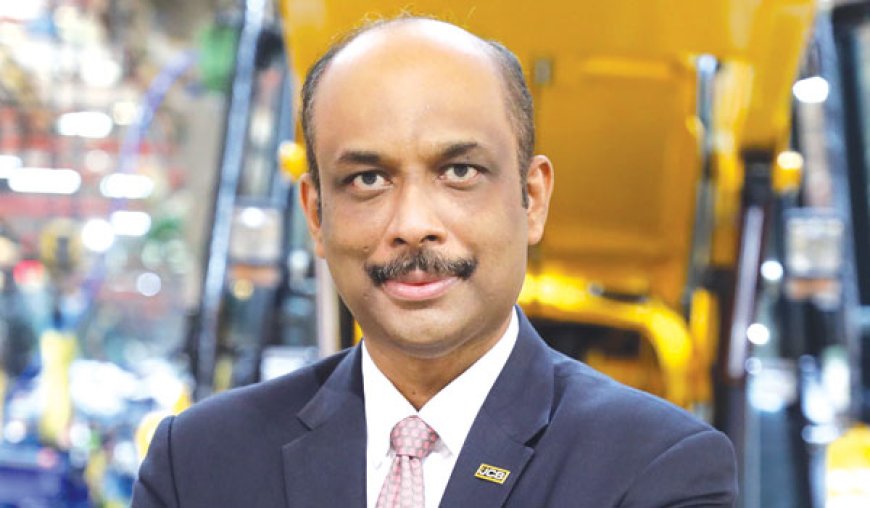India is going to be a growth driver for the world in coming decades, and this growth will come from infrastructure development in the country
This year, the Indian Government has given a massive push to the infrastructure sector by allocating Rs. 10 lakh crore ($ 130.57 billion) for development in the sector.

What is your future-outlook for the Indian construction and mining equipment manufacturers?
This year, the Indian Government has given a massive push to the infrastructure sector by allocating Rs. 10 lakh crore ($ 130.57 billion) for development in the sector. The National Highways Authority of India (NHAI) has been allocated Rs. 134,015 crore ($ 17.24 billion). An outlay of Rs. 60,000 crore ($ 7.72 billion) has been assigned to the Ministry of Road Transport and Highways.
For the Housing and Urban Development sector Rs. 76,549 crore ($ 9.85 billion) has been announced, and with the aim to create and augment telecom infrastructure in the country, Rs. 84,587 crore ($ 10.87 billion) has been allocated to the Department of Telecommunications.
India is going to be a growth driver for the world in the coming decades, and much of this growth will come from infrastructure development in the country. There are projects of significant National importance that are gaining encouraging momentum across the country. Large-scale Infrastructure development requires larger and more productive machines.
There has been a direct correlation between infrastructure development and equipment sales in the past. This year we witnessed a slow beginning in terms of equipment sales. This was due to a few reasons : the Russia-Ukraine conflict disrupted supply chains, and a steep increase in commodity prices led to lower demand in the year’s first quarter. However, with the government’s increased focus on the infrastructure sector, the cooling off of commodity and fuel prices, and the resumption of supply chains, we are seeing a steady rise in sales for construction equipment. Current trends indicate that the increase in the sale of machines with continue through the next year. It is predicted that the industry will see a growth of 15-20%.
As the year has ended, how do you look at the performance for your range of products in terms of sales?
For over four decades, JCB has remained committed to the India growth story. From introducing the Backhoe Loaders in India in 1979, to the global manufacturing force the company has become today, JCB India has been making the nation and its communities stronger every day. With six state-of-the-art factories in India, it manufactures a wide range of world-class equipment, not only for India, but for over 125 countries. Driven by constant innovation, revolutionary products, and adherence to global quality standards, JCB has sold over 3,50,000 machines – furthering the ‘Make in India’ initiative and steering millions towards empowerment. India is today not only an important market for JCB but is also the global manufacturing hub for the Group. Our focus on One Global Quality has led JCB to explore Global markets on such a large scale.
The JCB Backhoe Loader continues to be a favourite for Infrastructure projects for the last 42 years since it is a versatile, easy-to-use, and easy-to-transport machine. It is suitable for government projects like the Pradhan Mantri Gram Sadak Yojana (PMGSY) and Har Ghar Jal in rural areas. PMGSY was launched by the Govt. of India to provide connectivity to unconnected habitations as part of a poverty reduction strategy. According to the latest figures, about 167 thousand unconnected habitations are eligible for coverage under the programme. This involves the construction of about 371thousand km of roads for New Connectivity and 368 thousand km under upgradation. The Har Ghar Jal mission is envisioned to provide safe and adequate drinking water through individual household tap connections by 2024 to all households in rural India.
Sales of construction equipment — a barometer of economic activity — is expected to increase in healthy double digits in the ongoing financial year on the back of increased government spending on infrastructure projects, especially in rural areas.
The industry estimates sales of construction equipment (domestic sales and exports) to grow 15-20% in fiscal 2023. Since JCB has a high market share in the sector, the demand for JCB equipment will increase accordingly. One in every two machines is a JCB and we expect that we will continue to support the government at the same level.
What is your future strategies at a time when technological disruptions are rapidly defining businesses in the sector?
As an industry, Construction Equipment manufacturers are looking at the viability of electric equipment quite seriously. JCB India has been working on its ‘Road to Zero’ initiative for the past few years. Early this year we introduced the industry’s first fully Electric Excavator, the JCB 19C-1E at Excon, Bengaluru. JCB 19C-1E is a zero-emission machine and has four lithium-ion batteries that power the machine for a full day on a single charge. With a significant focus on safety and productivity, JCB’s 2GO system safely isolates all controls as a secondary safety system. Its auto-idle and auto kick-up redistribute power to preserve battery life. The machine has been introduced after rigorous testing and validation.
Manufacturers need to focus on smaller machines to make the Electric segment popular in the Construction Equipment category. These machines can work well in urban areas and indoor projects. Smaller machines can also work well inside tunnels for hydro, metro, and road construction projects.
We will require a robust infrastructure to support Electric Construction Equipment. India right now is at the initial steps of the electric equipment revolution. The Government has a relentless focus on the development of EV-compliant infrastructure across the country.
A private consumer expectation survey recently showed that around 66% of Indians said that electric vehicles will surpass petrol and diesel cars by 2030. For electric construction equipment, popularity will depend on manufacturers’ investment to develop smaller engines that can provide a powerful experience without compromising on the overall cost of the machine.
Hits: 6








